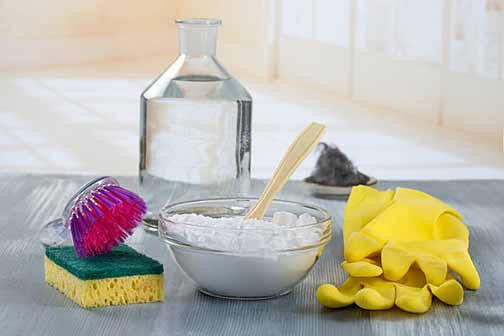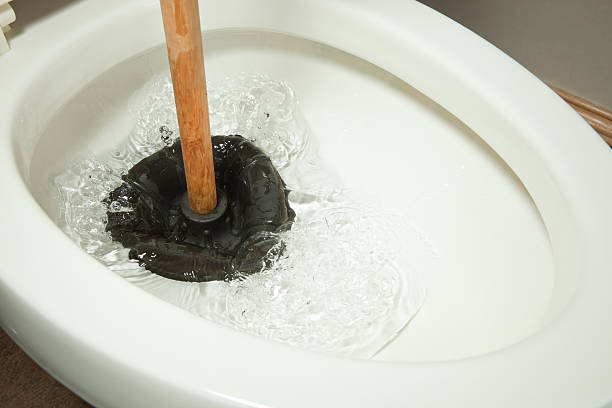Understanding the Causes of a Clogged Toilet
Before getting into the solutions, it’s crucial to understand the common causes of a clogged toilet. Blockages can occur due to various reasons such as excessive use of toilet paper, flushing non-flushable items like sanitary products and wipes, or even due to the build-up of mineral deposits in the pipes. Understanding the root cause can help in effectively addressing the issue and preventing future occurrences.
Excessive use of toilet paper is one of the most common causes of a clogged toilet. When too much toilet paper is flushed at once, it can create a blockage that prevents water from flowing freely through the pipes. Additionally, some types of toilet paper are thicker and less dissolvable, which can exacerbate the problem.
Flushing non-flushable items is another major culprit. Sanitary products, wipes, paper towels, and other items that are not designed to break down in water can easily cause a clog. These items can get stuck in the pipes and create a blockage that is difficult to remove.
Mineral deposits can also contribute to clogged toilets. Over time, minerals from hard water can build up inside the pipes, narrowing the passage and making it easier for clogs to form. Regular maintenance and the use of a toilet bowl cleaner that helps break down mineral deposits can help prevent this issue.
Initial Steps to Take When You Encounter a Clogged Toilet
When you first notice that your toilet is clogged, it’s important to remain calm and avoid flushing it repeatedly, as this can cause water to overflow. Instead, follow these initial steps to manage the situation:
First, put on a pair of rubber gloves to protect your hands. Then, use a plunger to try and dislodge the blockage. Make sure to use a plunger with a flange, as it creates a better seal and provides more suction. Position the plunger over the toilet drain and push down firmly, then pull up sharply. Repeat this process several times to see if the clog clears.
If the initial plunging attempts do not work, you can try adding hot water to the toilet bowl. Pour a bucket of hot (but not boiling) water into the toilet from waist height. The force of the water can help dislodge the clog and allow it to pass through the pipes. Be cautious not to overflow the toilet.
Another initial step is to use a toilet brush or a makeshift tool to try and break up the clog. Insert the brush or tool into the toilet drain and gently push and twist to see if you can dislodge the blockage. This method can be particularly effective for clogs caused by toilet paper or other soft materials.
Using a Toilet Auger for Stubborn Clogs
If the plunger doesn’t work, the next tool to try is a toilet auger, also known as a plumbing snake. A toilet auger is specifically designed to navigate the bends of a toilet drain and reach deeper blockages. Insert the auger into the toilet bowl and crank the handle to extend the cable into the drain. Once you feel resistance, continue cranking to break through the clog. Afterward, retract the auger and flush the toilet to see if the water flows freely.
Using a toilet auger requires some technique to ensure it is effective. When inserting the auger, be gentle to avoid damaging the porcelain of the toilet bowl. As you crank the handle, apply steady pressure and allow the cable to navigate through the bends of the drain. If you encounter a particularly stubborn clog, you may need to retract the auger and reinsert it to get a better angle.
In some cases, the clog may be located further down the drain line, beyond the reach of a standard toilet auger. If this is the case, you may need to use a longer plumbing snake or consider calling a local plumber to address the issue.
Homemade Solutions and Chemical Drain Cleaners
For those who prefer a DIY approach, there are several homemade solutions that can help clear a clogged toilet. One effective method is to pour a mixture of hot water and dish soap into the toilet bowl. Let it sit for about 15 minutes, then try flushing. The hot water and soap can help dissolve and break up the clog.
Another option is to use a mixture of baking soda and vinegar. Pour one cup of baking soda into the toilet, followed by one cup of vinegar. Allow the mixture to fizz and sit for about 30 minutes before attempting to flush. The chemical reaction between the baking soda and vinegar can help break down the clog and clear the drain.
While chemical drain cleaners are available, they should be used with caution. These products can be harsh on your plumbing and may cause damage if used excessively. Always follow the manufacturer’s instructions and consider them as a last resort. Additionally, some chemical drain cleaners can be harmful to the environment, so it’s important to use them sparingly and dispose of them properly.
For a more natural approach, you can try using a combination of salt, baking soda, and hot water. Pour one cup of salt and one cup of baking soda into the toilet, followed by a gallon of hot water. Let the mixture sit overnight, then try flushing in the morning. This method can help break down the clog without the use of harsh chemicals.

Preventive Measures to Avoid Future Clogs
Preventing clogs in the first place is the best approach to maintaining a smoothly functioning toilet. Here are some preventive measures to consider:
First, avoid flushing anything other than human waste and toilet paper. Items like wipes, sanitary products, and paper towels should be disposed of in the trash. Additionally, use toilet paper sparingly and consider using a thinner, more easily dissolvable brand.
Regular maintenance is also key. Periodically check your toilet and plumbing for any signs of build-up or potential issues. Using a toilet bowl cleaner that helps break down mineral deposits can also keep your pipes clear. Consider scheduling regular plumbing inspections to catch any potential problems before they become serious.
Educating household members about what should and should not be flushed can also help prevent clogs. Make sure everyone understands the importance of proper toilet use and the potential consequences of flushing non-flushable items.
Installing a toilet paper holder that limits the amount of toilet paper that can be dispensed at one time can also help reduce the risk of clogs. Additionally, consider using a toilet paper brand that is designed to dissolve quickly and easily in water.
When to Call a Professional Plumber
While many clogs can be resolved with the methods mentioned above, there are times when it’s best to call a professional plumber. If you’ve tried multiple solutions and the clog persists, or if you notice recurring issues with your toilet, it may indicate a more serious problem within your plumbing system.
A professional plumber has the expertise and tools to diagnose and fix complex issues, ensuring that your toilet and plumbing are in optimal condition. Don’t hesitate to seek professional help if you’re unsure or unable to resolve the clog on your own. Additionally, a plumber can provide valuable advice on how to prevent future clogs and maintain your plumbing system.
If you experience frequent clogs, it may be a sign of a larger issue, such as a blockage in the main sewer line or a problem with the septic system. A professional plumber can conduct a thorough inspection to identify the root cause and recommend the appropriate solution.
In some cases, a professional plumber may use advanced techniques such as hydro jetting, which uses high-pressure water to clear out clogs and clean the inside of the pipes. This method can be particularly effective for removing stubborn blockages and preventing future clogs.
Summing It Up
Dealing with a clogged toilet can be frustrating, but with the right knowledge and tools, it’s a manageable task. By understanding the causes, taking appropriate initial steps, using effective tools and solutions, and implementing preventive measures, you can keep your toilet functioning smoothly. Remember, if all else fails, professional plumbers are available to provide the necessary assistance and ensure your plumbing system remains in good working order.
Regular maintenance and proper toilet use are key to preventing clogs and maintaining a smoothly functioning plumbing system. By taking proactive measures and addressing issues promptly, you can avoid the inconvenience and potential damage caused by clogged toilets.
Whether you choose to tackle a clog yourself or seek the help of a professional plumber, the important thing is to address the issue promptly and effectively. With the right approach, you can keep your toilet and plumbing system in optimal condition and enjoy a hassle-free bathroom experience.


